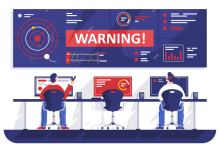
The sudden shift from on-premise to work-from-home (WFH) last year was an eye-opening experience for contact centers and employees alike. Understandably, there were some early stumbles among companies that had no previous remote-work model in place and those that had not transitioned to cloud platforms. Overall, though, companies reported seeing the benefits of having a remote workforce in a fast-changing, unpredictable business climate. Most contact center leaders have viewed the WFH experience as a promising disruption and have indicated that the model will become a permanent part of their post-pandemic operations. (Read about the industry research by contact center analyst and Pipeline Advisory Board Member Paul Stockford in the Q&A below.)
Frontline agents have embraced the flexibility that WFH offers. Despite growing WFH fatigue, most (66%) have expressed a desire to continue working remotely full time. However, they still want access to the contact center for training, meetings and social activities, according to 5th Talent’s April 2021 Contact Center Industry Work at Home Study. The report, which surveyed 5,777 contact center employees (92% agents; 8% supervisors), listed IT issues, internet problems and difficulty getting quick support when they need help with a customer among agents’ top “dislikes” about working from home.
Contact center leaders, likewise, have reported difficulty supporting home agents as one of their top challenges of 2020, according to the 2021 Contact Center Challenges and Priorities survey conducted by Strategic Contact and Pipeline. In fact, one of the top priorities that leaders cited for 2021 is implementing better home-agent support, tools and processes.
The Challenges & Priorities report also pointed out that the pandemic’s business impact raised awareness among senior executives of the strategic importance of the contact center, so it’s likely that funding for remote-work technology and initiatives may be more forthcoming. And, as WFH Alliance President Michele Rowan notes, less expenditure on real estate and related costs is shifting resources toward technology upgrades (see her comments in the Q&A below).
If your contact center is moving toward a more sustainable WFH model (or will be soon), what are the essential tools and technologies to consider for your remote-work wish list? Think communication, collaboration, instant access, autonomy, engagement, development and actionable insights. Provide WFH agents and supervisors with tools that bridge the distance and allow them to confidently and competently handle complex and often emotional transactions while feeling engaged and connected to their teams and supervisors.
This post is the first in a series on top tech & tools for the transition to a permanent remote-work model. Stay tuned for more information throughout the month from the industry’s leading contact center solutions experts who explain the WFH challenges that each tool solves, along with key features, how to get the most out of the technology, and valuable advice on making a successful transition to a permanent WFH model.
But first, read on for insights on the topic from two members of our Contact Center Pipeline Advisory Board.
Q. What is the top challenge that contact centers face in the transition to a permanent work-from-home model?
MICHELE ROWAN
President, Work From Home Alliance
In light of the decision taken by many to permanently expand remote working and working from home, many of my colleagues are talking about significant technology limitations. The good news is that, since many organizations are giving up some real estate and related costs, they (now) have the green light to reengineer a number of core systems. Tech stacks are being updated now at a feverish pace to meet customers where they are and journey with them across channels to resolution. Obviously, this transition to the cloud is a game-changer in customer experience and will also be a huge win for employees. I’m seeing material investments in data security and surveillance technologies, as well.
I’m also seeing my colleagues invest in tools that enable and enhance the social side of doing business in a remote environment. Long-term technology upgrades and investments are being made to best support digital hiring, onboarding activities, social activities, team building, learning. Resources are also being shifted around to best support people through the (now) digital employee life cycle.
The hard part is done—the decision to transition to work from home as a staffing strategy to a work strategy—and we know it works! Now it’s about raising the bar on the rest (workflows, guidelines, technologies). Easy-peasy, compared to what we’ve all been through!
Q. What is the outlook for WFH transitioning from a temporary COVID remote-work policy into a permanent model for the contact center workforce?
PAUL STOCKFORD
Founder, President & Chief Analyst, Saddletree Research
All indicators at this time point to the COVID remote or work-from-home (WFH) model becoming a permanent arrangement in the majority of contact centers. Our 2021 survey of contact center professionals, conducted in partnership with the not-for-profit National Association of Call Centers (NACC), indicates that as of May 2021, 97% of North American contact centers have some or all of their workforce working remotely, as illustrated in the graph below.
We also asked our research participants about their WFH workforce plans in the post-pandemic era. The responses are illustrated below.
More than half the industry expects a decrease in their WFH workforce, but only about 5% have stated their intention to bring their entire workforce back in-house when it’s safe to do so. Prior to the pandemic, 48% of the industry had all of their employees working in-house. In the future, we expect to see only about 5% of the industry having all of their employees working in-house.
The wild card in all this is what I’m calling “The Biggest Loser” effect, which I explained in my April 2021 column. If The Biggest Loser effect becomes a dominant factor, all this changes, but if it doesn’t, it looks like WFH becomes a permanent model for the contact center workforce.
Next up in the WFH technology series: Quality Management Tools







